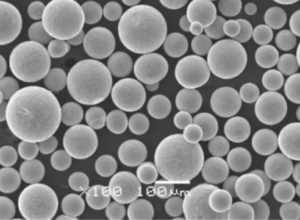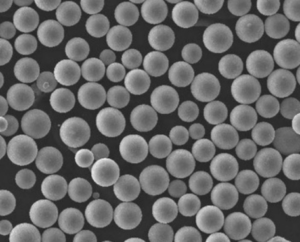Haynes 214 toz olağanüstü yüksek sıcaklık oksidasyon direnci ile bilinen son derece özel bir metal tozudur, bu da onu aşırı ortamlar için tercih edilen bir malzeme haline getirir. Ancak bu olağanüstü malzemede çok daha fazlası var. Bu kapsamlı kılavuzda, Haynes 214 tozunun bileşimi, özellikleri, uygulamaları ve teknik özelliklerinden sektördeki diğer benzer tozların ayrıntılı bir karşılaştırmasına kadar toz hakkında bilmeniz gereken her şeyi inceleyeceğiz.
İster bir mühendis, ister bir malzeme bilimcisi olun ya da sadece gelişmiş metal alaşımlarını merak ediyor olun, bu kılavuz bir sonraki projeniz için bu ürünü seçmeden önce göz önünde bulundurmanız gereken tüm temel hususları kapsayacaktır.
Haynes 214 Powder'a Genel Bakış
Genellikle süper alaşım olarak adlandırılan Haynes 214 tozu, yüksek sıcaklık uygulamalarında parlayan nikel bazlı bir alaşımdır. Yüksek oksidasyon direnci sunmak için özel olarak tasarlanmıştır, bu da onu gaz türbinlerinde, fırınlarda ve diğer yüksek sıcaklık ekipmanlarında kullanım için mükemmel kılar. Bu alaşım, hem endüstriyel hem de havacılık sektörlerinde kritik öneme sahip bir denge olan mükemmel korozyon direncini yüksek mekanik mukavemetle birleştirir.
Aşağıda Haynes 214 tozunun temel özelliklerinin kısa bir özeti yer almaktadır:
| Mülkiyet | Detay |
|---|---|
| Kompozisyon | Nikel (), Krom (), Alüminyum (%4,5) ve daha fazlası |
| Birincil Uygulamalar | Gaz türbinleri, endüstriyel fırınlar, kimyasal işleme |
| Temel Özellikler | Oksidasyon direnci, termal stabilite, mukavemet koruması |
| Maksimum Çalışma Sıcaklığı | 2200°F'ye (1204°C) kadar |
| Toz Form | 3D baskı, termal püskürtme ve toz metalurjisi için metal tozu |
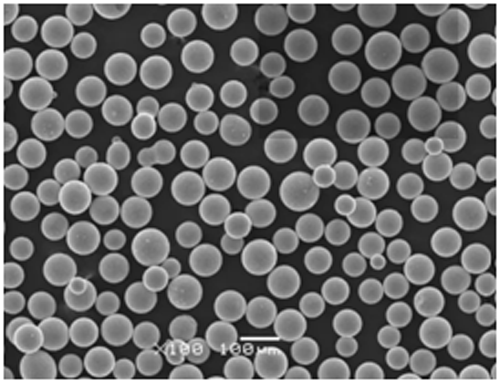
Haynes 214 Tozunun Bileşimi
Haynes 214 tozunun bileşimini anlamak, performans özellikleriyle ilgilenen herkes için çok önemlidir. Bu süper alaşım ağırlıklı olarak nikelden yapılır, ancak ona benzersiz özelliklerini veren krom ve alüminyum gibi diğer elementlerle kombinasyonudur. Şimdi bileşimini inceleyelim:
| Element | Yüzde |
|---|---|
| Nikel (Ni) | 75% |
| Krom (Cr) | 16% |
| Alüminyum (Al) | 4.5% |
| Demir (Fe) | 3% |
| Diğer Unsurlar | <1% |
Bu özel element dengesi, Haynes 214 tozunun aşırı sıcaklıklar altında yapısal bütünlüğünü korumasını sağlarken, alüminyum içeriği oksidasyona karşı koruyan bir oksit tabakası oluşturur.
Haynes 214 Tozunun Özellikleri
Haynes 214'ü diğer metal tozlarından ayıran nedir? Termal kararlılık ve oksidasyon direnci gibi ayırt edici özellikleri, onu birçok yüksek sıcaklık endüstriyel uygulamasında tercih edilen bir seçenek haline getirmektedir. Şimdi bu alaşımın tanımlayıcı özelliklerine bir göz atalım.
Oksidasyon Direnci
Öne çıkan özelliği Haynes 214 toz 2200°F (1204°C) gibi yüksek sıcaklıklarda oksidasyona direnme kabiliyetidir. Alaşımdaki alüminyum içeriği, daha fazla oksidasyonu önleyen koruyucu bir oksit tabakası oluşturarak malzemeyi zorlu ortamlarda bile stabil tutar.
Termal Kararlılık
Yüksek termal kararlılık Haynes 214'ün bir diğer özelliğidir. Aşırı ısıya maruz kaldığında zayıflayabilen veya bozulabilen diğer alaşımların aksine, bu toz uzun süreli yüksek sıcaklığa maruz kaldığında gücünü ve mekanik özelliklerini korur.
Korozyon Direnci
Öncelikle korozyon direnci için tasarlanmamış olsa da Haynes 214, özellikle oksitleyici atmosferler olmak üzere çeşitli ortamlarda iyi performans gösterir. Bu da onu kimyasal işleme gibi yüksek sıcaklık uygulamalarının ötesinde bir dizi endüstri için çok yönlü bir seçenek haline getirir.
Mekanik Dayanım
Haynes 214'ün nikel bazlı yapısı, yüksek sıcaklıklarda bile yüksek mekanik mukavemeti korumasını sağlar. Bu da onu yüksek sıcaklık sistemlerindeki yapısal bileşenler için uygun hale getirerek dayanıklılık ve uzun ömür sağlar.
Diğer Metal Tozları ile Karşılaştırma
Bir metal tozu seçerken, Haynes 214'ün performansını piyasada bulunan diğer tozlarla karşılaştırmak çok önemlidir. İşte en iyi rakiplerden bazıları:
| Toz Modeli | Kompozisyon | Maksimum Sıcaklık. | Güç | Oksidasyon Direnci | Fiyat |
|---|---|---|---|---|---|
| Haynes 214 | Ni-, Cr-, Al-%4,5 | 2200°F | Yüksek | Mükemmel | $$$ |
| Inconel 625 | Ni-, Cr-,5, Mo-%9 | 2000°F | Orta düzeyde | Yüksek | $$ |
| Hastelloy X | Ni-, Cr-, Mo-%9, Fe- | 2200°F | Yüksek | İyi | $$$ |
| Haynes 230 | Ni-57%, Cr-22%, W-14%, Mo-2% | 2100°F | Çok Yüksek | Mükemmel | $$$ |
| Inconel 718 | Ni-, Cr-, Fe-, Nb-%5 | 1300°F | Orta düzeyde | Orta düzeyde | $ |
| Nimonic 263 | Ni-, Cr-, Co-, Mo-%5 | 1800°F | Orta düzeyde | Yüksek | $$ |
| Haynes HR-120 | Ni-37%, Fe-37%, Cr-25%, Si-1% | 1800°F | Orta düzeyde | İyi | $$ |
| Alaşım X-750 | Ni-, Cr-, Fe-%7, Ti-%2,5 | 1300°F | Yüksek | Orta düzeyde | $$ |
| Incoloy 800H | Fe-, Ni-,5, Cr- | 1650°F | Orta düzeyde | Yüksek | $ |
| Haynes 282 | Ni-57%, Cr-19.5%, Co-10%, Mo-8.5%, Al-1.5% | 1800°F | Çok Yüksek | Mükemmel | $$$ |
Bu metal tozlarının her birinin uygulamaya bağlı olarak kendi güçlü ve zayıf yönleri vardır. Haynes 214, Inconel 625 veya Nimonic 263'e kıyasla yüksek sıcaklık direnci ve üstün oksidasyon koruması ile öne çıkmaktadır. Bununla birlikte, daha pahalı olması onu performansın kritik olduğu niş uygulamalar için daha uygun hale getirmektedir.
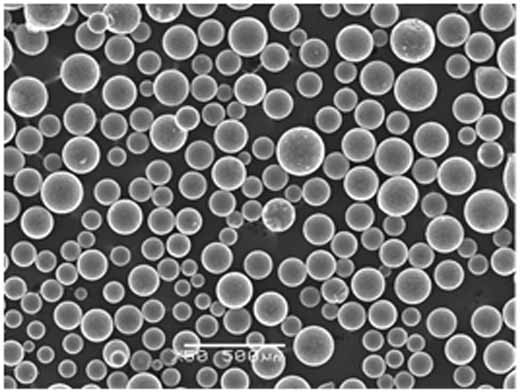
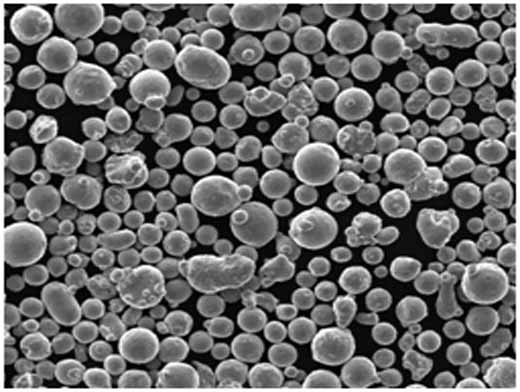
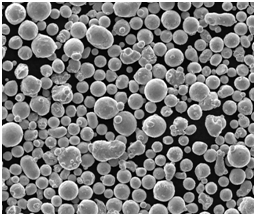
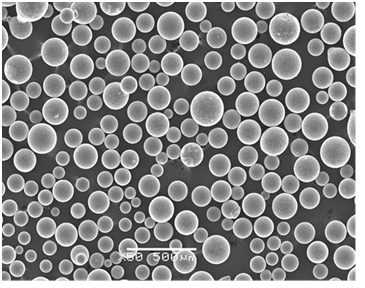
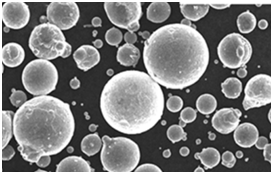
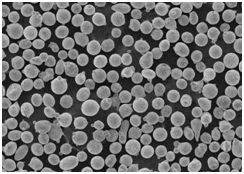
Haynes 214 Powder Uygulamaları
Haynes 214 tozunun çok yönlülüğü, çeşitli endüstrilerdeki çeşitli yüksek sıcaklık ortamlarında kullanılmasına olanak tanır. Aşağıda yaygın uygulamalarının bir dökümü yer almaktadır.
| Uygulama | Endüstri | Avantajlar |
|---|---|---|
| Gaz Türbini Bileşenleri | Havacılık ve Uzay | Yüksek mukavemet, oksidasyon direnci, ısı stabilitesi |
| Fırın Kaplamaları ve Donanımları | Endüstriyel Isı İşleme | Oksidasyona karşı koruma, yüksek sıcaklıklarda uzun ömürlülük |
| Yanma Odaları | Enerji Üretimi | Mükemmel termal stabilite ve oksidasyon direnci |
| Kimyasal İşleme Ekipmanları | Kimya Mühendisliği | Korozyon ve oksidasyon direnci |
| Isı Eşanjörleri | Enerji Santralleri | Mukavemet ve ısı direncini korur |
| yüksek Sıcaklıktaki Parçalar için 3D Baskı | Katmanlı Üretim | Hassas parçalar için uygun ince toz |
Haynes 214 Tozunun Özellikleri ve Standartları
Haynes 214 tozunun spesifikasyonu, çeşitli endüstrilerdeki uygulaması söz konusu olduğunda çok önemlidir. Aşağıda malzemenin standart boyutları, dereceleri ve diğer özellikleri yer almaktadır.
| Şartname | Detay |
|---|---|
| Toz Parçacık Boyutu | 15-45 mikron |
| Üretim Standardı | ASTM B637 |
| Mevcut Sınıflar | Haynes 214-A, Haynes 214-B |
| Saflık | > |
| Mevcut Formlar | Toz, Tel, Çubuk, Levha |
Tedarikçiler ve Fiyatlandırma Detayları
Haynes 214 powder fiyatı ve bulunabilirliği tedarikçiye, miktara ve ihtiyaç duyulan özel kaliteye bağlı olarak değişir. Aşağıda Haynes 214 powder sunan tedarikçilerin bir listesi bulunmaktadır.
| Tedarikçi | Bölge | Kg başına fiyat (USD) | Toplu İndirimler |
|---|---|---|---|
| Gelişmiş Tozlar | Kuzey Amerika | $150-$200 | Evet |
| Malzeme Çözümleri | Avrupa | $180-$230 | Evet |
| PowderTech Global | Asya | $160-$210 | Evet |
| MetalAlloy Tedarik | Dünya çapında | $170-$220 | Evet |
| SuperAlloys Ltd. | Kuzey Amerika, AB | $150-$210 | Evet |
Fiyatlar piyasa talebi ve tedarik zinciri faktörlerine bağlı olarak dalgalanmaktadır, bu nedenle doğru fiyatlandırma için birden fazla tedarikçiden güncel fiyat teklifleri istemek önemlidir.
Haynes 214 Powder'ın Avantaj ve Dezavantajları
Bir yandan Haynes 214 toz birçok avantaj sunsa da, projenizin özel ihtiyaçlarına bağlı olarak göz önünde bulundurmanız gereken bazı sınırlamalar vardır. İşte artıları ve eksilerinin bir dökümü.
| Avantajlar | Dezavantajlar |
|---|---|
| Mükemmel oksidasyon direnci | Diğer alaşımlara kıyasla daha yüksek maliyet |
| 2200°F'ye kadar yüksek termal kararlılık | Sertlik nedeniyle işlenmesi zor |
| Yüksek sıcaklıklarda iyi mekanik dayanım | Özel ısıl işlem süreçleri gerektirir |
| Hem endüstriyel hem de havacılık için çok yönlü | Küçük miktarlarda sınırlı bulunabilirlik |
| Katmanlı üretim için uygun | Düşük sıcaklık uygulamaları için potansiyel aşırılık |
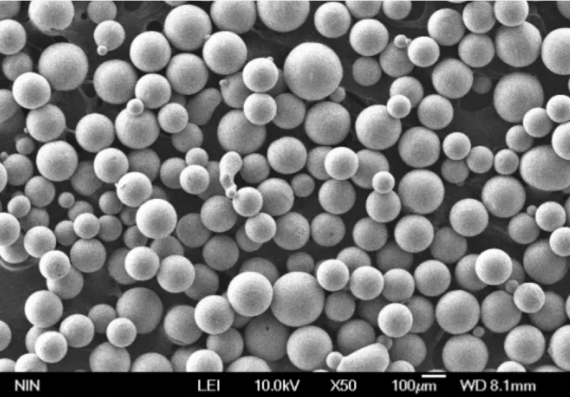
SSS
Haynes 214 pudra ile ilgili sık sorulan soruları yanıtlamak için hızlı bir SSS bölümü:
| Soru | Cevap |
|---|---|
| Haynes 214 tozu ne için kullanılır? | Haynes 214 tozu, gaz türbinleri ve endüstriyel fırınlar gibi yüksek sıcaklık uygulamalarında kullanılır. |
| Haynes 214 tozunu özel kılan nedir? | Diğer alaşımlara kıyasla üstün oksidasyon direnci ve termal stabilite sunar. |
| Haynes 214 tozu pahalı mı? | Evet, özel nitelikleri nedeniyle daha pahalı olma eğilimindedir. |
| 3D baskıda kullanılabilir mi? | Evet, eklemeli imalat ve toz metalurjisi için uygundur. |
| Inconel 625 ile karşılaştırıldığında nasıldır? | Haynes 214, Inconel 625'e göre daha yüksek sıcaklıklarda daha iyi oksidasyon direnci sunar. |
| Kimyasal işleme için uygun mu? | Evet, korozyon direnci onu kimyasal işleme ortamları için ideal kılar. |
Sonuç
Haynes 214 toz yüksek sıcaklık ve yüksek gerilimli uygulamalar için güçlü ve çok yönlü bir malzemedir. Nikel, krom ve alüminyumdan oluşan benzersiz karışımı, eşsiz oksidasyon direnci ve termal stabilite sağlar. Daha yüksek bir maliyete sahip olsa da, aşırı ortamlarda sağladığı faydalar onu havacılık, enerji üretimi ve kimyasal işleme gibi endüstriler için değerli bir yatırım haline getirmektedir.
Inconel 625 veya Hastelloy X gibi diğer metal tozlarıyla karşılaştırıldığında, Haynes 214, özellikle yüksek sıcaklık performansı önemli olduğunda kendi başına kalır. Bu alaşımın özel uygulamalarını, avantajlarını ve sınırlamalarını anlamak, bir sonraki projeniz için doğru kararı vermenize yardımcı olacaktır.
